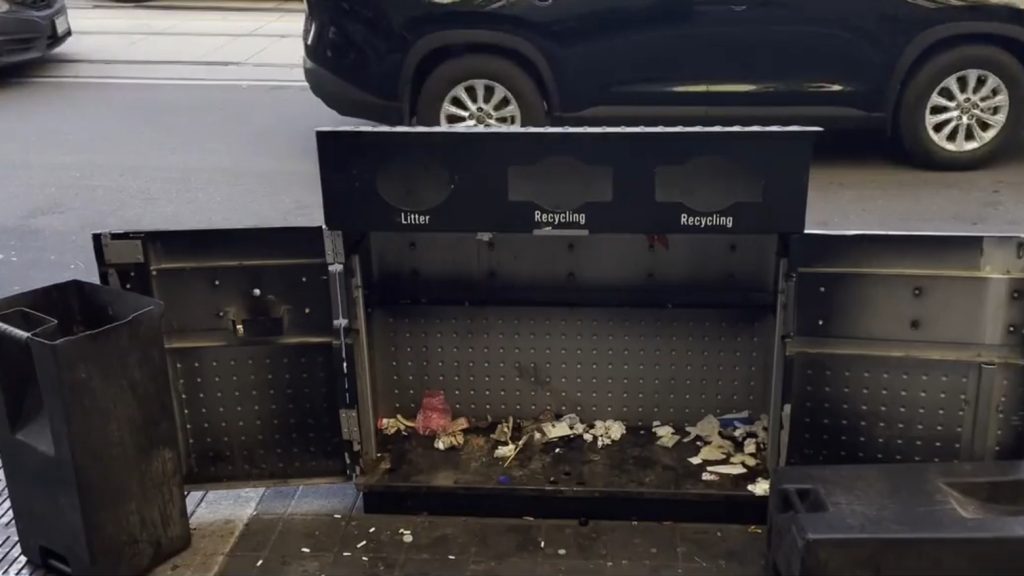European Central Bank to hold off on rate cuts, pushing politicians to act and rescue euro
Posted June 5, 2012 3:37 pm.
This article is more than 5 years old.
FRANKFURT – The European Central Bank has a powerful weapon that just might push political leaders into helping solve the continent’s financial crisis: withholding further support.
The ECB isn’t likely to take any new steps when it meets Wednesday, analysts say, even as anxiety builds over the deteriorating outlook for Europe’s economy and banking system.
ECB President Mario Draghi signalled last week that he wants to see stronger political and financial ties among the 17 countries that use the euro. If such ties are forged — possibly at a European Union summit later this month — analysts say the ECB would be more likely to reward European governments and banks with the financial shot in the arm they desperately need.
It’s a risky game because euro countries are in big trouble.
Spain’s borrowing costs are rising to an unsustainable level as the country struggles to come up with billions to prop up banks saddled by bad real estate loans. Concerns are rising that it could be forced to join Ireland, Greece and Portugal in seeking an international financial rescue. Spain’s economy is much larger than the other three, making its problems an order of magnitude more worrisome for European leaders.
In just over two weeks, Greek voters return to the polls. If they elect a government that rejects the terms of the country’s multibillion-euro bailout, this could force the country out of the euro — an outcome that would have uncertain and potentially dire consequences for global financial markets.
All across Europe, ailing banks and governments are joined at the hip. Bailing out banks has been a huge burden on governments; and weakened government finances have been a drag on banks that own government bonds.
Over the past week, some of Europe’s leading authorities have been pushing political leaders to act quickly to break this burdensome link.
The European Commission called on politicians last Wednesday to create a central European authority with the financial muscle to fix the continent’s broken banks. The next day, Draghi echoed those comments, saying the current setup of the 17-country currency union was “unsustainable.”
No cut is expected Wednesday in the ECB’s benchmark interest rate, which is already at a record low of 1 per cent. And there’s little prospect that it will serve up more cheap emergency loans for shaky banks anytime soon. It handed out €1 trillion ($1.24 trillion) in such loans in December and February.
Analysts say the ECB has a strong motive for staying put until it sees some movement from governments.
“The ECB looks tired of being the eurozone’s fire brigade and seems to have a preference for staying on hold,” Carsten Brzeski, an analyst at ING in Brussels, wrote in a note to investors. “It looks like the ECB will want to keep the pressure as high as possible to tackle political complacency.”
If Draghi and the ECB governing council see results from EU leaders at their late June summit, they might be inclined to respond with more help. That’s what the ECB did after European countries agreed to a deficit-cutting treaty in December; it followed up with cheap bank loans that temporarily helped hold the crisis at bay.
Of course, the ECB’s hand could be forced sooner if Europe’s financial crisis were to deteriorate.
Among the measures the ECB could introduce are:
— Cut interest rates below its current record of 1 per cent. Analysts say they could go as low as 0.5 per cent. The ECB might be forced to do that as early as July if the economy keeps deteriorating or a government defaults on its debt. Lower rates can help growth by lowering borrowing costs for businesses.
— Offer more cheap loans to banks. The first two rounds helped ease the crisis by letting troubled banks borrow at a current rate of 1 per cent for three years. The banks used some of this money to buy government bonds, which made it less expensive for some heavily indebted nations to borrow.
— Direct purchases of government bonds. This would drive down government borrowing costs. The ECB did this intermittently to support Spain and Italy until late last year. But the limited nature of the program did not impress bond markets much.
But for the ECB to introduce one or more of these measures, it likely needs action first from Europe’s leaders.
A variety of proposals have been put forth to stem the crisis and put Europe on a more sustainable path. They include: using Europe’s bailout fund to directly recapitalize banks, instead of funneling loans through individual governments; creating a Europe-wide bank regulator with the power to take over failing banks; and establishing some form of European bonds that could make it easier for heavily indebted nations to borrow and reduce the likelihood of default by any single country.
Any such reforms would be difficult to achieve because they would require richer countries — such as Germany — to accept more responsibility for poorer countries’ mismanaged finances. And most would take years to implement. Still, joint decision-making by governments could reassure the markets and help the eurozone step back from the edge.










